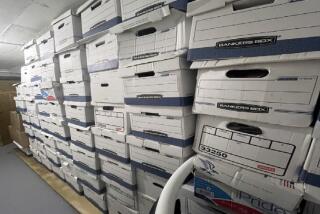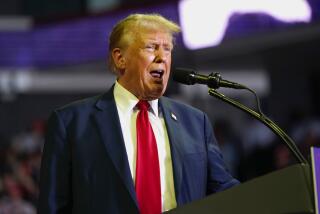FBI removed classified documents from Mar-a-Lago, is investigating possible Espionage Act violations
WASHINGTON â FBI agents removed 11 sets of classified documents â including some marked top secret and meant to be available only in special government facilities â from former President Trumpâs Mar-a-Lago estate in Florida on Monday.
The itemized list of items taken from the property, which was released Friday at the Department of Justiceâs request along with the accompanying warrant, includes one set of documents marked as âVarious classified/TS/SCI documents,â which is an abbreviation that refers to top-secret/sensitive compartmented information. In addition, agents recovered four sets of top secret documents, three sets of secret documents and three sets of confidential documents, according to the newly public information.
The list, released by U.S. Magistrate Judge Bruce Reinhart Friday with the text of the warrant, does not include details on the subject matter of the documents.
According to the search warrant, the alleged crimes under investigation are violations of the Espionage Act, which outlaws the unauthorized retention of national security information that could harm the United States or aid a foreign adversary; a federal law that makes it a crime to destroy or conceal a document in order to obstruct a government investigation; and another statute associated with unlawful removal of government materials.
Punishment and fines upon conviction are assessed depending on the number of concealed or destroyed documents.
Atty. Gen. Merrick Garland announced Thursday that the Department of Justice would seek to unseal the warrant and itemized receipt of what was removed from the property after Trump disclosed the search and his lawyers provided reporters with details about what the FBI was looking for. Reinhart gave the Justice Department until 3 p.m. Eastern time to confer with Trumpâs lawyers and inform the court whether he planned to contest unsealing the documents. Trump said on his Truth Social network late Thursday that he supported unsealing the warrant.
Warrant and inventory of items removed from former President trumpâs residence Aug. 8, 2022
Within the 20 boxes removed in Mondayâs search were binders of photos, a handwritten note, an executive grant of clemency for conservative provocateur Roger Stone and information about the âPresident of France.â
The warrant allowed agents to search âthe 45 Office,â and âstorage rooms and all other rooms or areas within the premises used or available to be used by [the former president] and his staff and in which boxes or documents could be stored, including all structures or buildings on the estate.â
Agents were instructed in the warrant to take not only any information marked classified that they found, but also the containers or boxes â including any other contents â in which the materials were located and any other containers or boxes nearby. They were also instructed to look for communications in any form regarding the retrieval, storage or transmission of national defense information or classified material, as well as any evidence that presidential records or classified documents were knowingly altered, destroyed or concealed.
Under the Presidential Records Act of 1978, presidential records are supposed to be turned over to the National Archives when a president leaves office. The archives had already recovered more than 15 boxes of material that were improperly taken to Mar-A-Lago.
The unprecedented court-approved search of a former presidentâs home by the FBI, which Trump called a âraid,â set off a firestorm of criticism from Trump and his Republican allies, who accused the Department of Justice of a âwitch huntâ and demanded more information from top officials about why it took place. That continued Friday with Republicans on Capitol Hill saying they needed to see the underlying affidavit used to justify the search, something that normally would not become public unless charges were filed.
Rep. Michael Turner (R-Ohio) told reporters Friday that the release of the warrant and inventory would still leave âunanswered questions.â
âWe are very concerned about the method that was used to raid Mar-a-Lago,â he said citing the length of the daylong search.
Multiple news outlets reported Thursday that the Department of Justice had already used subpoenas and other âless intrusiveâ means to recover documents this spring, but sought the search warrant because it believed Trump still had confidential or top secret materials at Mar-A-Lago, including some related to nuclear programs.
In a Truth Social post Friday morning, Trump suggested without any evidence that any recovered nuclear documents were planted by the FBI during their search of Mar-a-Lago earlier this week.
In a separate post, he stated that the documents seized by agents at his Florida club were âall declassified,â and said that he would have turned over the documents to the Justice Department if asked.
âThey could have had it anytime they wanted without playing politics and breaking into Mar-A-Lago,â he said.
While presidents have authority to declassify documents, Trump hasnât demonstrated that he followed normal notification procedures, which help National Security officials know who is allowed to view what information, while in office. Now that he is not president, Trump no longer has that authority. In the end it may not matter â the three statutes under which he is being investigated donât differentiate between classified or non-classified information.
In that same post, he argued that that former President Obama kept 33 million pages of documents, including some that were classified.
The National Archives and Records Administration pointed out in a statement that the documents are housed by the National Archives for the Obama Presidential Library.
The results of Mondayâs search could potentially affect Trumpâs other legal issues, including the Department of Justiceâs ongoing investigation into the former presidentâs attempts to use fake slates of electors to convince lawmakers to overturn the 2020 election in his favor.
It is unlikely that all of the contents of the 20 boxes of material removed from the estate Monday is classified. Some of the boxes could contain mementos and personal letters that Trump wanted to keep â something other former presidents have done â but some of the materials could also be personally, politically or legally damaging.
Now that the materials are back in the governmentâs possession, Trump has no say in how they are used, including against him in court, said former federal prosecutor Neama Rahmani.
âIf thereâs something in there that can be evidence of another crime, thatâs fair game,â Rahmani said.
More to Read
Get the L.A. Times Politics newsletter
Deeply reported insights into legislation, politics and policy from Sacramento, Washington and beyond. In your inbox three times per week.
You may occasionally receive promotional content from the Los Angeles Times.











